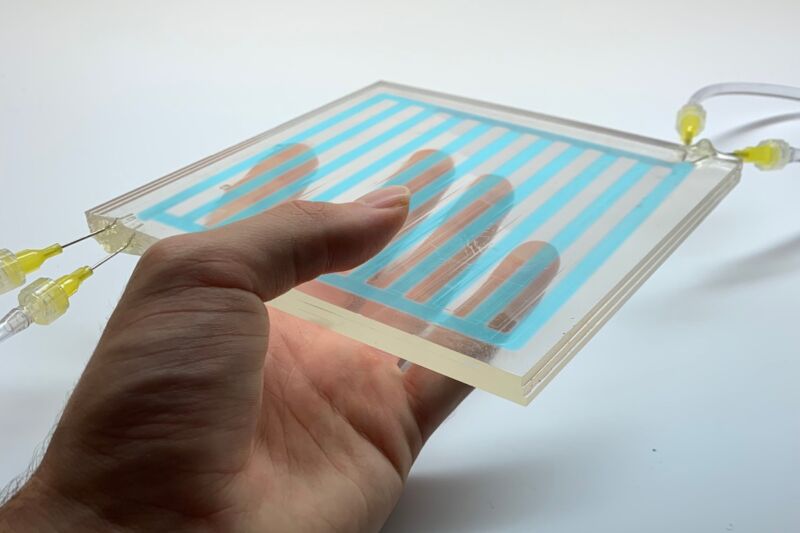
Squid and several other cephalopods can rapidly shift the colors in their skin, thanks to that skin's unique structure. Engineers at the University of Toronto have drawn inspiration from the squid to create a prototype for "liquid windows" that can shift the wavelength, intensity, and distribution of light transmitted through those windows, thereby saving substantially on energy costs. They described their work in a new paper published in the Proceedings of the National Academy of Sciences.
“Buildings use a ton of energy to heat, cool, and illuminate the spaces inside them,” said co-author Raphael Kay. “If we can strategically control the amount, type, and direction of solar energy that enters our buildings, we can massively reduce the amount of work that we ask heaters, coolers, and lights to do.” Kay likes to think of buildings as living organisms that also have "skin," i.e., an outer layer of exterior facades and windows. But these features are largely static, limiting how much the building "system" can be optimized in changing ambient conditions.
Installing blinds that can open and close is a crude means of easing the load on lighting and heating/cooling systems. Electrochromatic windows that change their opacity when a voltage is applied are a more sophisticated option. But, per Kay, these systems are pricey and have complicated manufacturing processes and a limited range of opacities. Nor is it possible to shade one part of a windowpane but not another.
So they looked to nature for inspiration. Last year, the Toronto engineers built a system with arrays of optofluidic cells inspired by marine arthropods, such as krill, crabs, and fish like tilapia, which can disperse and collect pigment granules in their skin to change their color and shading. Those prototype cells consisted of a thin layer of mineral oil between two transparent sheets of plastic. Injecting a bit of water containing a pigment or dye through a tube connected to the cell's center creates a bloom of color. The shape of the bloom is tied to the flow rate, which can be controlled by a digital pump. A low flow rate produces circular blooms; faster flow rates create intricate branching patterns:
Squid skin is translucent and features an outer layer of pigment cells called chromatophores that control light absorption. Each chromatophore is attached to muscle fibers that line the skin's surface, and those fibers, in turn, are connected to a nerve fiber. It's a simple matter to stimulate those nerves with electrical pulses, causing the muscles to contract. And because the muscles are pulling in different directions, the cell expands, along with the pigmented areas, changing the color. When the cell shrinks, so do the pigmented areas.
Underneath the chromatophores, there is a separate layer of iridophores. Unlike the chromatophores, the iridophores aren't pigment-based but are an example of structural color, similar to the crystals in the wings of a butterfly, except a squid's iridophores are dynamic rather than static. They can be tuned to reflect different wavelengths of light. A 2012 paper suggested that this dynamically tunable structural color of the iridophores is linked to a neurotransmitter called acetylcholine. The two layers work together to generate the unique optical properties of squid skin.
reader comments
41